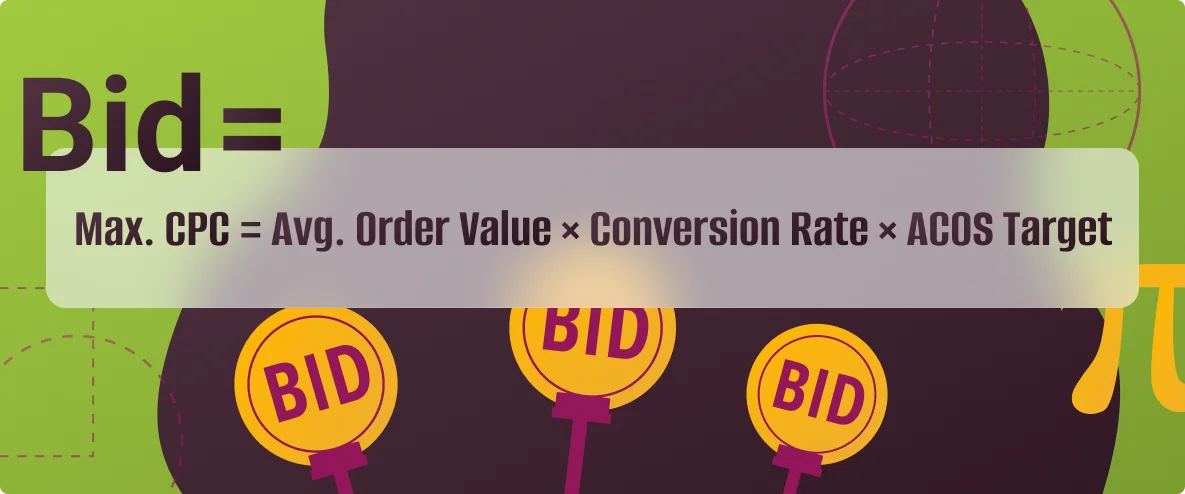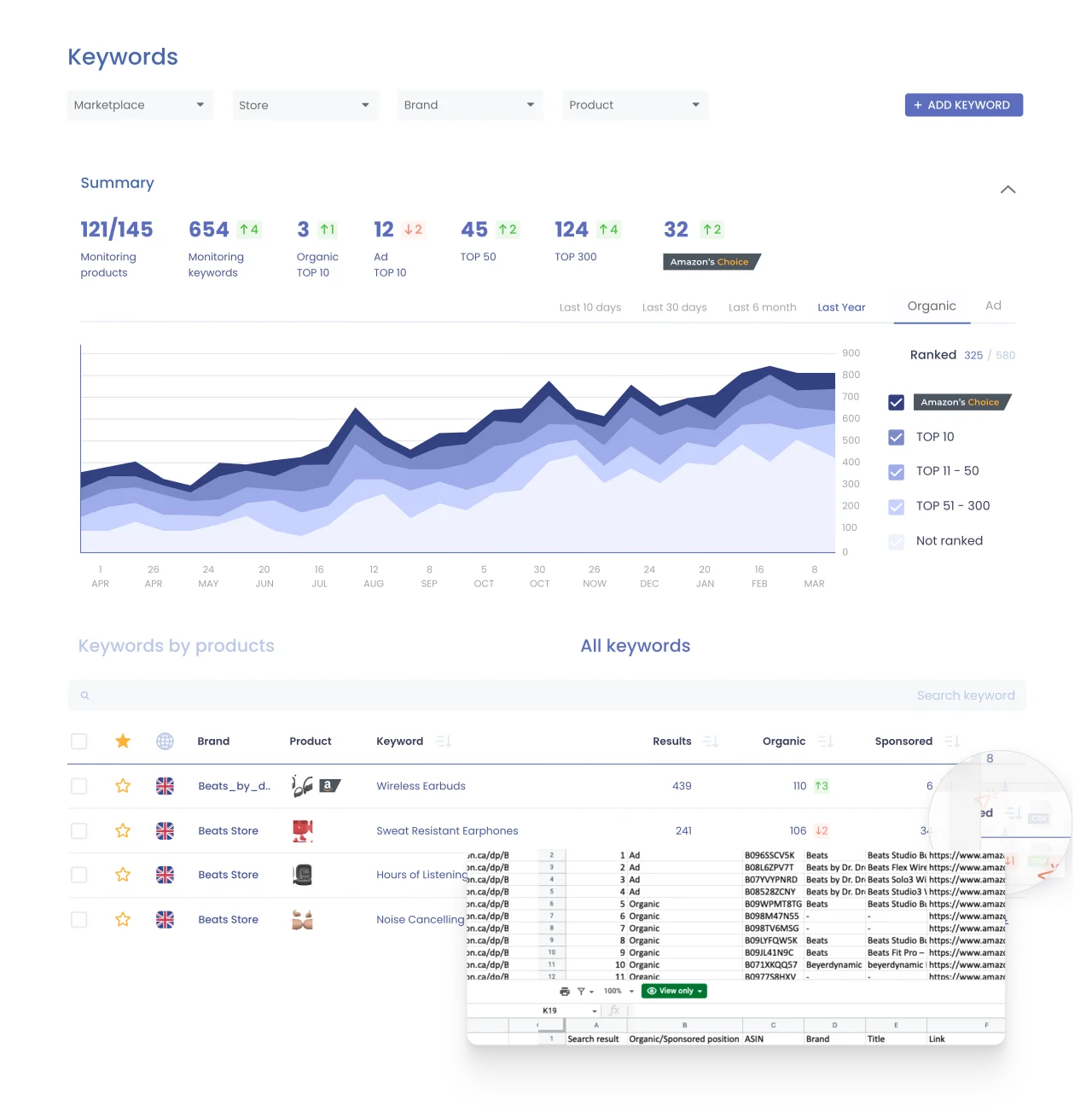Table of Contents
 For some, high-roller gambling is an exhilarating rush of adrenaline, while for others, it evokes a sickening feeling in the pit of their stomachs. How you react in high-stakes situations could be determined by a combination of your genetics, upbringing, and risk tolerance. However, it could also be affected by the specific circumstances of the night.
For some, high-roller gambling is an exhilarating rush of adrenaline, while for others, it evokes a sickening feeling in the pit of their stomachs. How you react in high-stakes situations could be determined by a combination of your genetics, upbringing, and risk tolerance. However, it could also be affected by the specific circumstances of the night.
Interestingly, this principle applies not just to gambling but to your Amazon advertising bidding strategy as well. As an Amazon seller, there are certain formulas and rules to follow when navigating the bid-up Amazon process. Nevertheless, the ultimate goal is always to maximize profits while minimizing costs. And this is precisely what we aim to teach you.
What Is Amazon Bidding?
If you’re an Amazon seller, you know that getting your products seen by potential customers is critical to your success. That’s where Amazon bidding comes in. In short, it’s a system that allows sellers to compete with each other for the opportunity to display their ads to shoppers.
But what does Amazon’s bid mean, exactly? When a shopper searches on Amazon, the platform uses a complex algorithm to determine which products to display in the search results. One factor influencing this decision is the bid price sellers set for their ads. The higher the bid, the more likely the ad will be displayed.
Of course, there’s more to it than simply setting a high bid. Amazon also considers factors like the ad’s relevance to the search term, the quality of the product listing, and the overall performance of the seller’s account. So while the bidding is an important part of the equation, it’s not the only thing that matters.
Ultimately, Amazon bidding aims to help sellers get their products in front of the right audience at the right time. By understanding how the system works and using it to your advantage, you can improve your visibility on the platform and increase your chances of making sales.
Amazon Bid: How Does It Work?
Finding the perfect product on Amazon typically involves typing search terms into the search bar and scrolling through the search results. If you’re an advertiser looking to display your products to interested shoppers, there’s more to it than just including the right keywords in your campaigns.
Enter the world of Amazon bidding. Similar to Google Ads, advertisers on Amazon participate in an enhanced Second-Price Auction. In this model, the advertiser with the highest bid wins the auction. However, the final price they pay for a click on their ad is just one penny more than the second-best bid.
But how do you know the right bid for your Amazon campaign? To make the most informed decision, sellers must understand the factors in calculating the optimal bid. It’s not just about setting a high bid and hoping for the best. Rather, it’s about balancing the bid amount with factors like the relevance of the ad to the search term, the quality of the product listing, and the overall performance of the seller’s account.
By taking the time to understand the intricacies of Amazon bidding and crafting a smart bidding strategy, you can maximize your chances of reaching the right audience and achieving your sales goals.
The equation to estimate your optimal bid is:

While optimal bid calculation is an important part of the AMZ bidding process, it’s worth noting that it’s just one piece of the puzzle. Making a confident and informed decision about your bidding strategy requires a more comprehensive approach.
Amazon Bidding Types
When creating a Sponsored Products campaign on Amazon, choosing the right bidding strategy is a critical decision that can greatly impact the success of your campaign. But with three different options to choose from – Dynamic bids – down and only, Dynamic bids – up and down, and Fixed bids – the decision can be overwhelming.
One of the most important things to remember when selecting bidding types is that it will apply to all bids within your campaign. So, it’s crucial to understand the pros and cons of each option and consider which one will work best for your specific campaign objective.
Dynamic Bids – Down Only
It’s Amazon’s recommended campaign bidding strategy. With this option, AMZ will lower your bid by up to 100% when a click is less likely to convert. It keeps the integrity of the bid as the maximum cost-per-click is in line with the efficiency goal set for your ad group or campaign.
Dynamic Bids – Up and Down
It allows the platform to raise the bid by up to 100% if your click will rather convert and lower the bid by up to 100% if it’s less likely to convert. However, AMZ has certain limitations on bid increases for different placements. For Top of Search, the bid won’t increase by more than 100%, while for Product Page and Other placements, it won’t increase by more than 50%. Although this approach may work in certain scenarios, it often leads to higher expenses and lower efficiency, so it’s not a commonly recommended strategy.
Fixed Bids
It is a bidding strategy where AMZ won’t dynamically adjust bids depending on the likelihood of conversion. While this can be useful for new campaigns where the marketplace is still gathering data, it’s not usually recommended. It is because there are potential efficiency gains and cost reductions when AMZ can lower your bid dynamically if it’s less likely to convert.
Ultimately, your bidding strategy will depend on your specific campaign objectives and budget. Carefully consider each option and choose the one that best aligns with your goals for your Sponsored Products campaign on Amazon.
Can AMZ Dynamic Bids Increase Sales?
Dynamic bidding is a popular strategy on Amazon, potentially increasing conversion rates while decreasing ad spend. However, it’s important to consider the potential drawbacks, such as fewer clicks and higher bids.
To make the most of dynamic bidding, it’s crucial to closely monitor your campaign’s performance and make adjustments as necessary. Starting with a modest bid adjustment and gradually increasing or decreasing it based on your campaign’s performance can help you optimize your results.
To boost your chances of success…
Fine-tune your search terms
When advertising on Amazon, the keywords you choose can make all the difference. They determine which search results in your campaign will appear and directly impact the amount you need to bid and the likelihood of conversion. In other words, the right keywords can help you reach the right audience while optimizing your campaign’s performance. Therefore, it’s essential to conduct thorough keyword research and choose relevant, high-traffic keywords to get the most out of your advertising efforts.
Use SellerSonar to identify your campaign’s most relevant and profitable short and longtail keywords. With our tool, you can quickly check how many of your keywords are in the Organic top 10, 50, Ad top 10, or have Organic Amazon Choice badges. As the result, you can launch the most effective marketing campaigns and get more traffic from the platform’s search engine.

Improve your listings
In Amazon advertising, getting clicks on your ads is only half the battle. To turn those clicks into actual sales, your product listing needs to be top-notch. It includes using high-quality images, crafting informative and compelling product descriptions, and maintaining a positive feedback rating. Optimizing these elements of your listing increases the chances that potential customers will convert after clicking on your ad. In short, investing time and effort into perfecting your product listing can pay off in a big way when it comes to driving sales through AMZ advertising.
Get on Amazon Prime
The rapid shipping service offered by Amazon is a significant attraction for customers, assuring free two-day deliveries under the fast shipping program. In addition, by meeting the AZM Prime requirements through FBA or Seller Fulfilled Prime, sellers can earn the blue Prime badge, and their products can appear in search results filtered for fast shipping.
Follow an ad strategy
When selecting a bidding method for your Sponsored Product campaign, it all boils down to the objective you wish to achieve. It’s crucial to pick a strategy that aligns with your goal and stick to it. This way, you can determine the appropriate bid for your campaign.
Amazon Dynamic Bidding Strategies
1. Cost reduction
If you’re running a new advertising campaign on Amazon, it’s important to have a cost reduction strategy to minimize your advertising costs while you get acquainted with the platform. This strategy involves testing different keywords, gathering data, and optimizing your listings over time.
To implement this strategy effectively, consider using the “Down only” bid option, which prevents you from overspending on advertising while allowing Amazon’s algorithms to collect valuable performance data. Once you’ve collected enough data and optimized your listings, you can consider upgrading to the “Up and Down” bid option for even more targeted advertising.
2. Sales
An effective approach for established campaigns that have already been optimized is a sales strategy. It uses proven keywords to achieve the flywheel effect by maximizing advertising spend.
For a sales strategy, the best bidding option is “Up and Down.” This option maximizes your chances of increasing conversions and boosting your brand’s visibility on the platform. Moreover, since AMZ has gathered sufficient data on your ad’s past performance, it can better predict potential conversions, resulting in a higher likelihood of success.
3. Impressions
A brand awareness strategy can be highly effective when launching new products and generating visibility. This approach is focused on maximizing the number of times your ad is displayed to potential customers, regardless of whether they click on it or not.
For a brand awareness strategy, the ‘Fixed’ bid is an excellent choice, ensuring that your advertisement appears in all relevant searches. Once your product has gained traction and brand recognition, you can shift to a sales strategy utilizing an ‘Up and Down’ bid.
It’s essential to note that you shouldn’t run multiple campaigns targeting the same product simultaneously because they will bid against each other, resulting in inefficient use of your advertising budget.
Amazon Bid: Conclusion
Amazon bidding can be overwhelming and confusing for many sellers, but there is no need to worry. The marketplace continues to introduce new features to provide sellers with the necessary tools to succeed on the platform.
Monitoring metrics, keeping an eye on keywords, and optimizing them when necessary are crucial for achieving desired results. However, it’s also important not to overlook the significance of building good customer relationships and generating feedback.
One effective tool for automating review management is SageMailer. This service sends feedback and review requests to customers, which are official Amazon requests that fully comply with all of Amazon’s policies. Amazon encourages sellers to provide customers with high-quality service, and requesting feedback is essential for becoming a successful merchant.
Don’t miss a chance to benefit from the service. Register for a free 30-day trial now!


